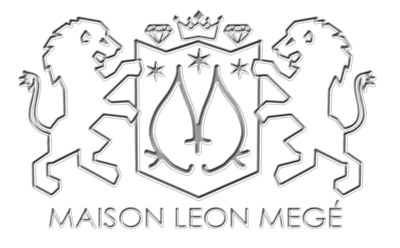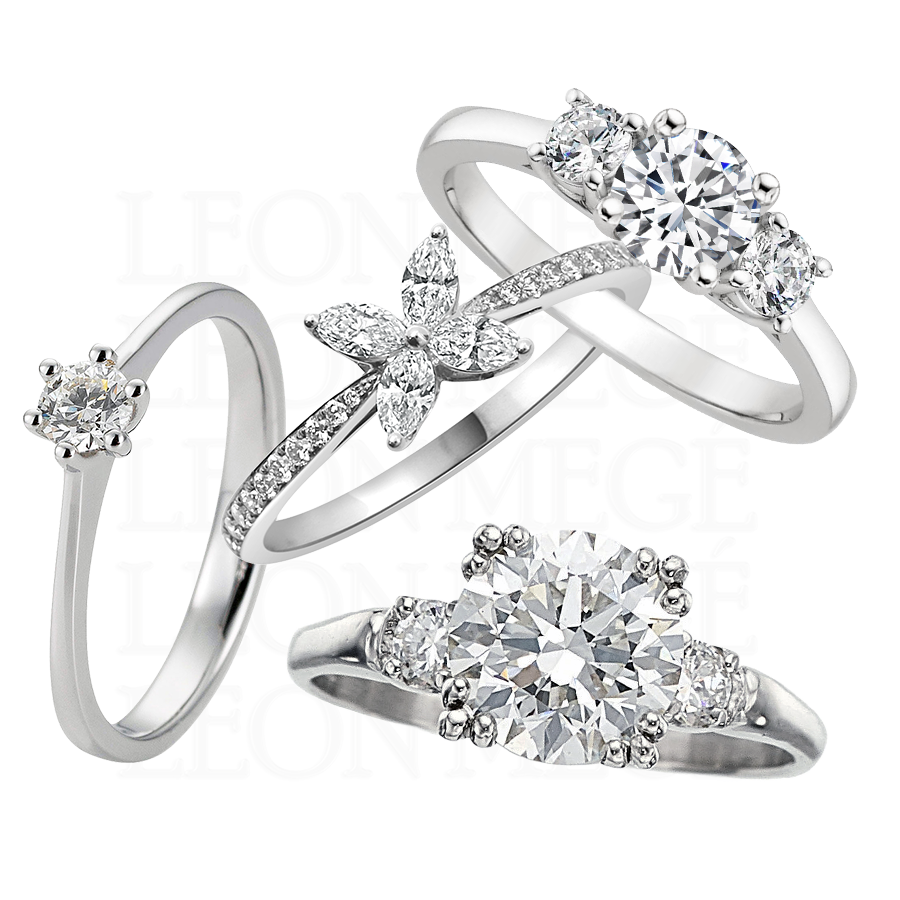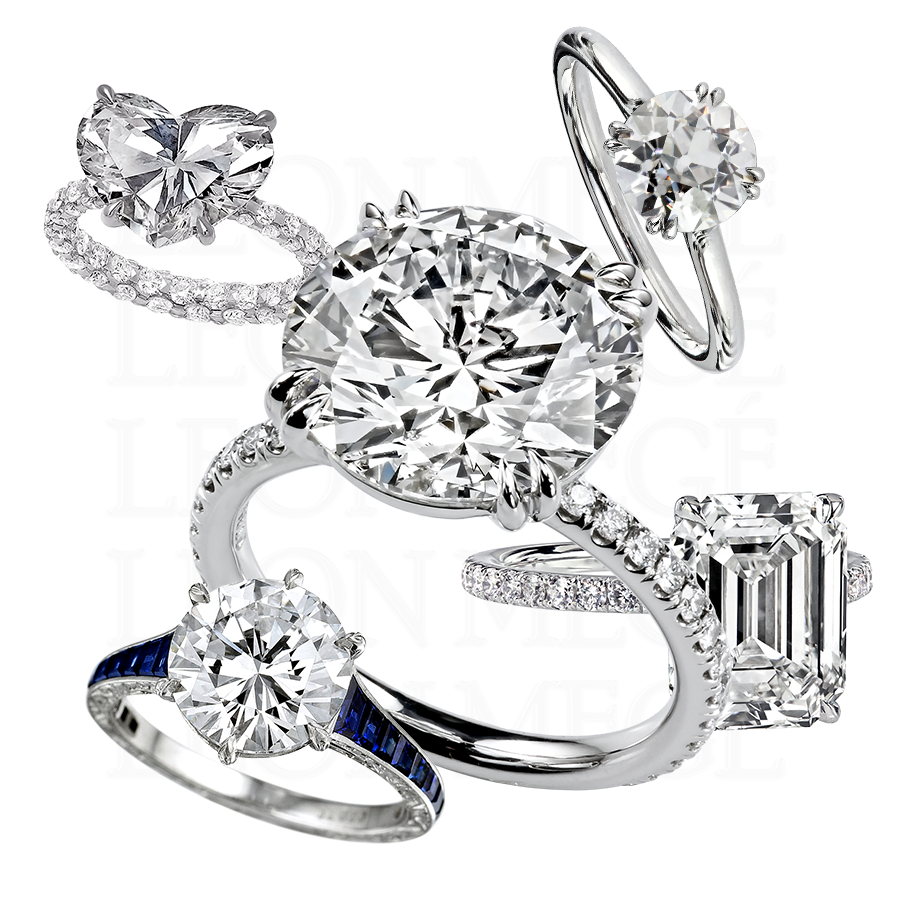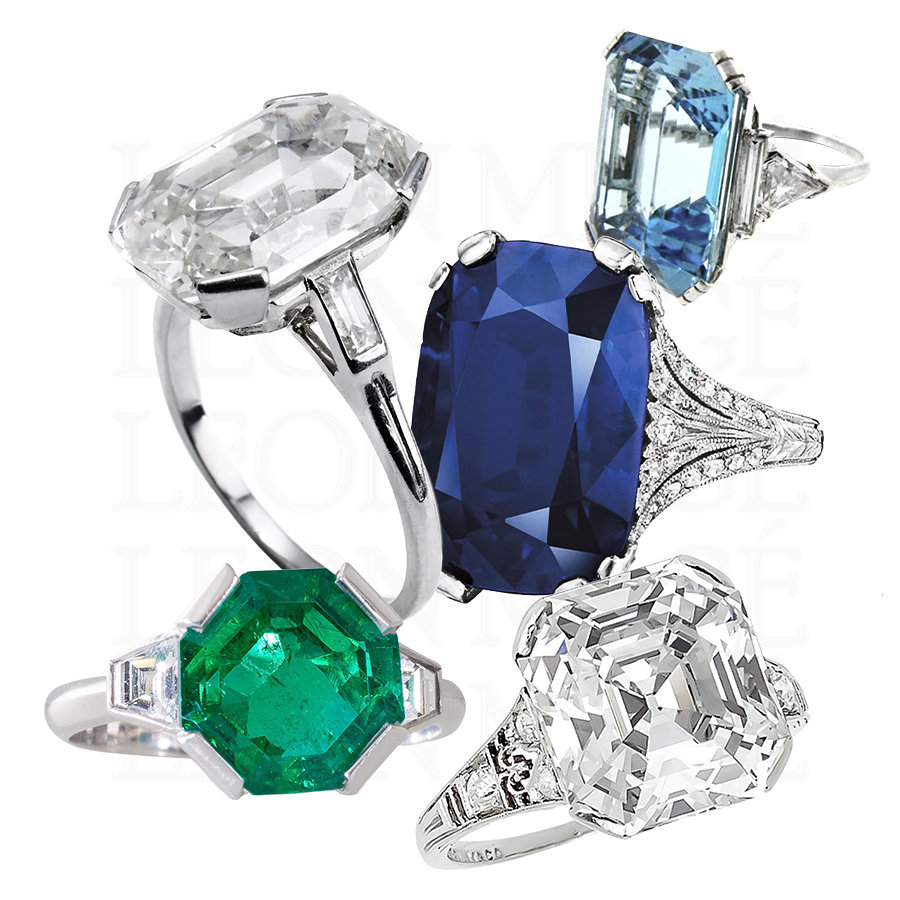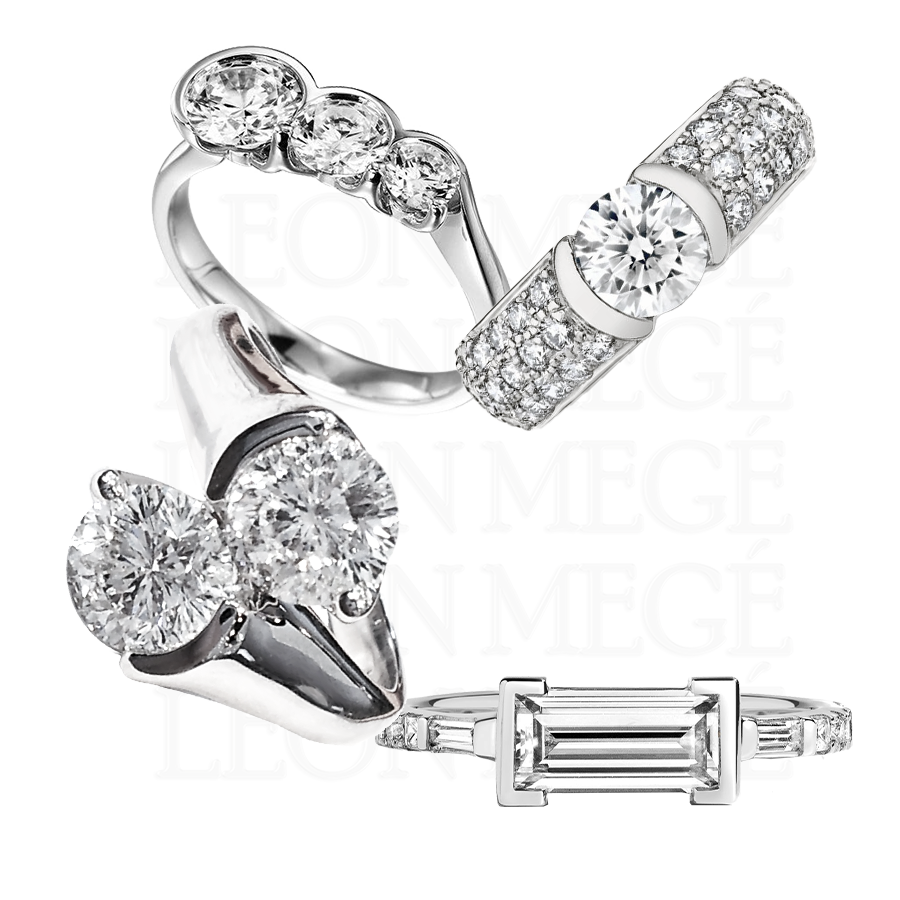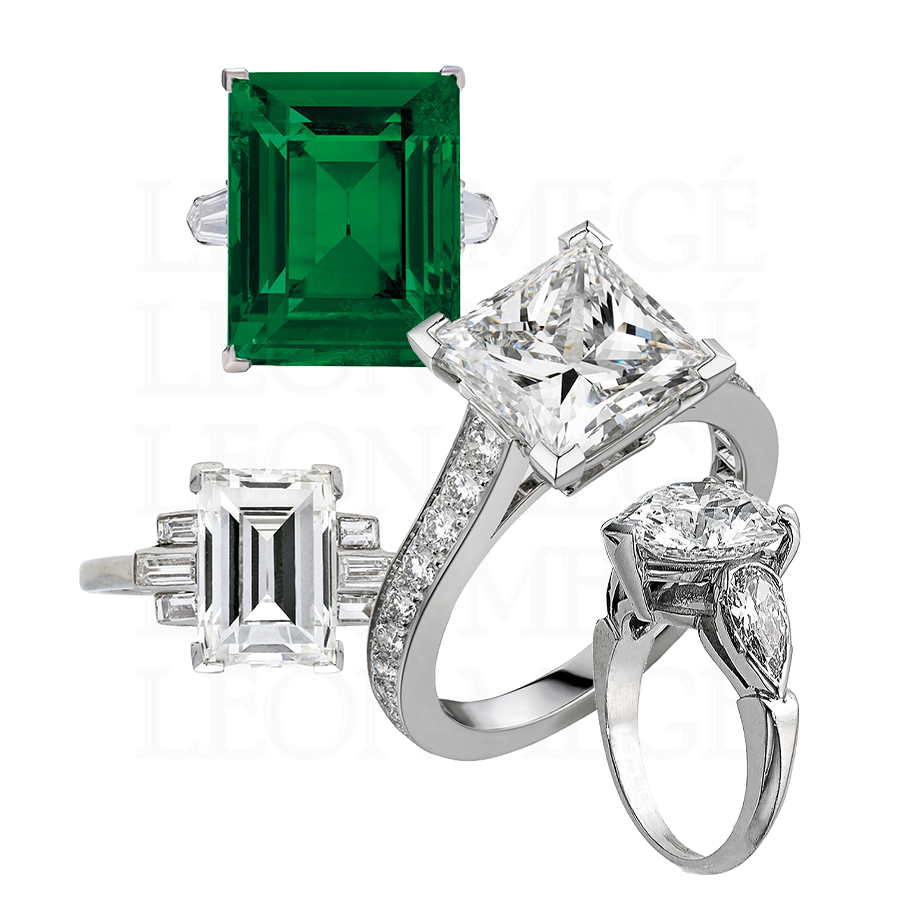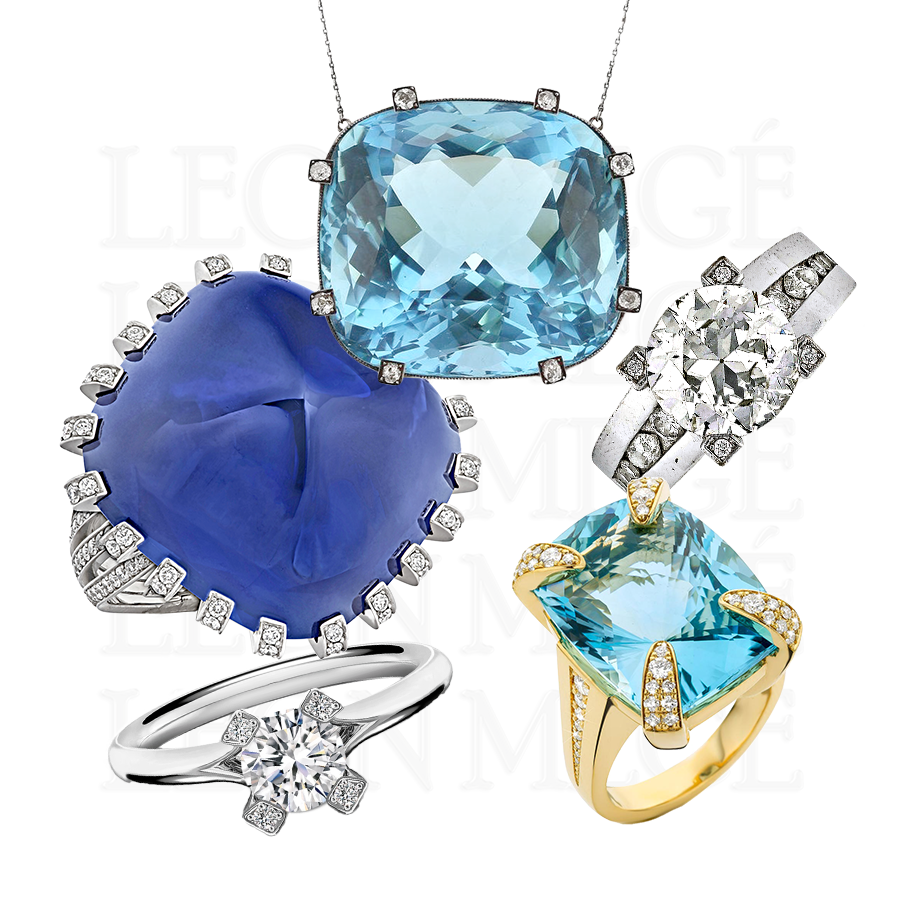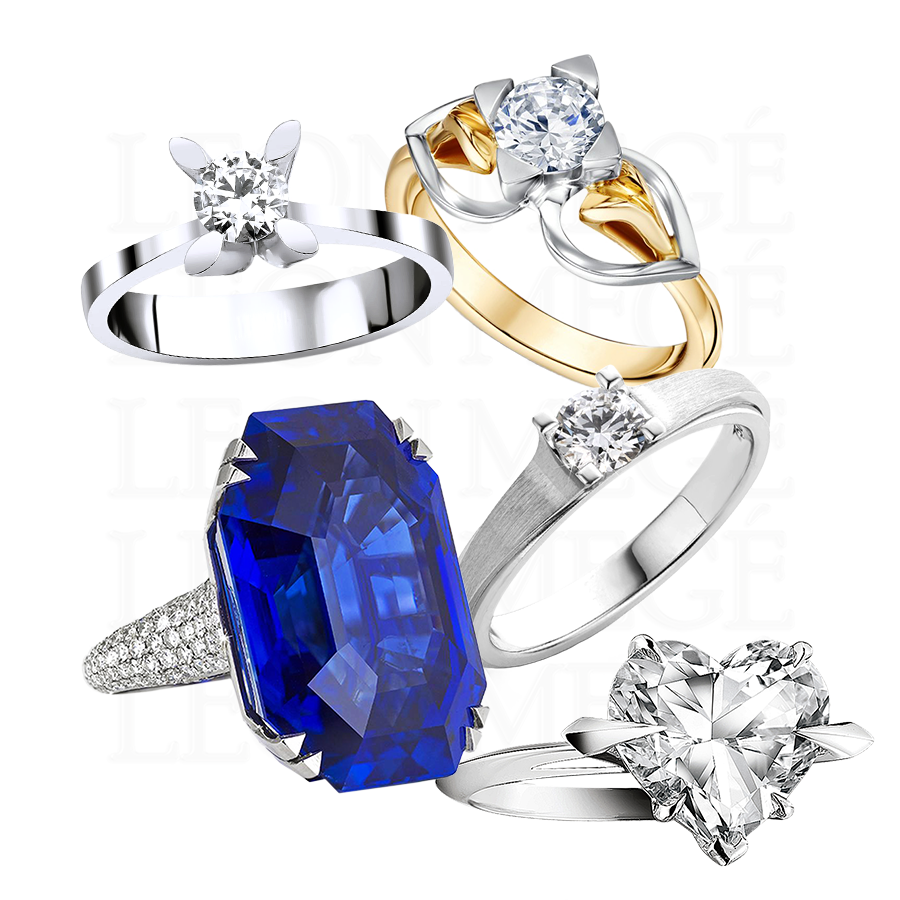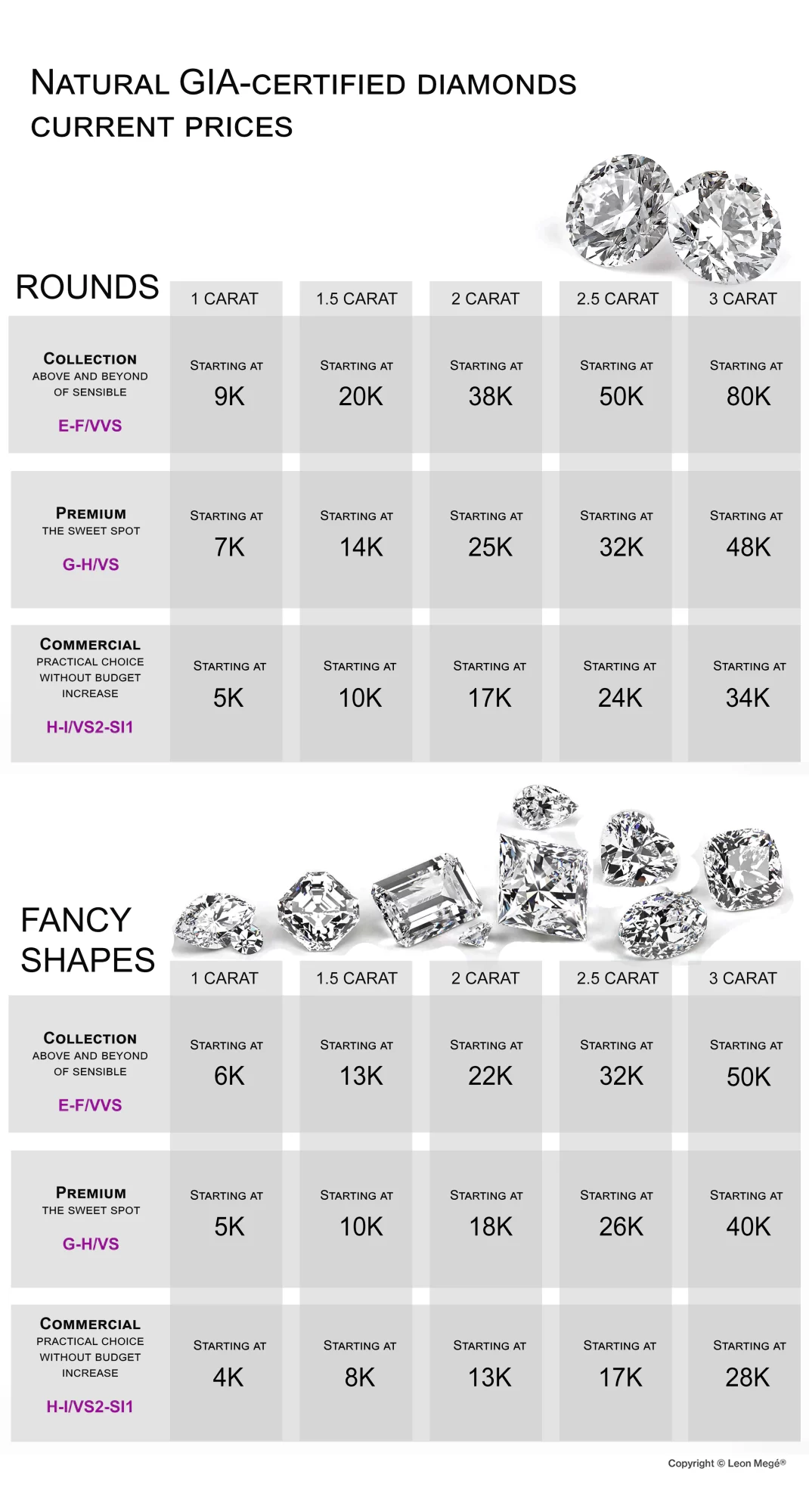Prongs are small hooks holding stones securely and with minimum obstruction. Prongs grip stones with their tips folded over the girdle. They converge under the stone to form a basket. The prong setting is the most popular way of setting diamonds and gemstones. Prong tips can be fashioned into claws, balls, or other shapes varying in width and thickness depending on the stone size and girdle geometry.
The prongs are the most effective way to secure gemstones with minimum metal visibility providing a high level of security. No prong setting is completely foolproof. A gemstone can fall out if the prong bends or breaks. However, a well-made and properly fitted setting significantly reduces the chance of this happening. A regular inspection by a qualified jeweler will help to identify any potential problems before a stone is lost.
A bezel setting can be considered the safest way to secure a stone because it wraps the entire girdle with metal. Unfortunately, it changes the look of the stone and makes it appear smaller by covering a significant area.
The prong setting provides a because it provides a good balance of security and visibility for the desired effect of the stone hovering in thin air without noticeable support. Expertly shaped prong tips are nearly invisible, the goal of fine jewelry.
Round prongs
Ball-shaped round prongs are the most common type found in jewelry. They are finished with spherical tips that even a beginner can repeatedly replicate with a beading tool. When looking down at the stone, the prongs look like small beads hugging the edge of the stone. As the stone size increases, the round prongs give way to claw prongs that are less pronounced.
They are rarely used for setting large stones in high-end jewelry. On the other hand, small stones are often set with ball prongs. Center stones set with round prongs are a telltale sign of commercial-grade jewelry.
Claw prongs
Claw prongs are shaped like pointy talons. The claw shape makes them nearly invisible. Unlike round prongs, shaped with a rotary tool, the claw prongs are painstakingly finished by hand using files and grinding wheels. Filing requires a lot of experience and takes time. It is physically impossible to maintain a consistent shape during mass production. It takes a lot of experience and know-how to finish a perfect “eagle-claw” prong. Much of the appeal of Leon Mege jewelry is in the ideal shape of our eagle-claw prongs
Swiss (tab) prongs
Flat prongs are the oldest type of prongs; they represent an evolution of the bezel setting. Flat prongs are narrow strips of metal left between sections of the bezel removed to let in more light.
The prong tips are shaped like flattened pyramids with sliced-off tops. Flat prongs have a rectangular cross-section as opposed to round-wire prongs. Flat prongs were popular during the Art-Deco period. Crown-style settings such as Tiffany solitaires are usually finished with flat prongs.
V-prong
V-prongs are typically used for stones with pointed ends, such as marquise, pear, heart, and princess cuts. V-prongs are designed to emphasize their sharp corners to help distinguish them from similar-looking shapes: marquises from ovals, Princesses from Radiants and cushions, etc. Both C- and V-prongs can be flat or rounded on the top. The prongs complement the stone, adding clarity to its shape and making it more pronounced. V-prongs are typically used for smaller stones. V-prongs provide extra protection to the most delicate part of a stone by evenly distributing the pressure over the wider surface, which helps prevent chipping and breakage.
